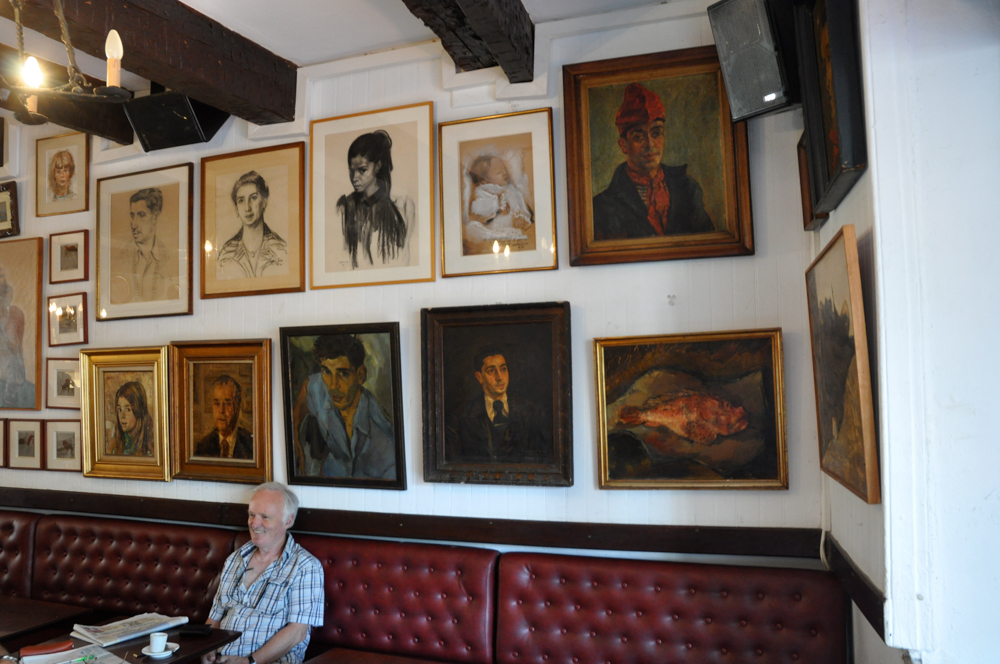
Collioure has attracted artists since the beginning of the 20th century when it was “discovered” by a group known as the Fauve artists. They were attracted not only by the subject matter but by the quality of the light. Henri Matisse and Andre Derain established their base in Collioure and were soon followed by the likes of Dufy and Picasso.

Until tourism had an impact, Collioure was a small fishing village on the Mediterranean coast close to the Spanish border. Like many quaint fishing villages, it grew once tourists began arriving in large numbers. Thankfully though it still retains much of its charm.
Collioure was not always French but was ruled over by the Kings of Mallorca until it eventually became French in 1659. The quaint little harbour is dominated by the Chateau Royale de Collioure, built by Vauban as a defensive measure against Spanish expansionism.
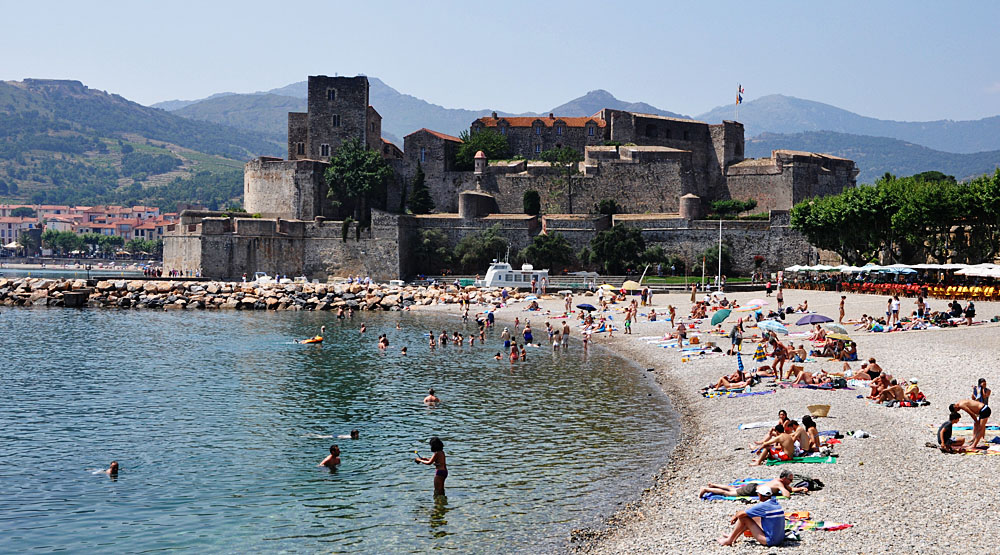
The artists, attracted by the clarity of the light and the ample subject matter, needed a place to stay. The Hotel des Templiers became their base and meeting place. A heady mix of fact and myth in local storytelling tells us that the poverty-stricken artists had little money to pay for their lodgings so they offered their paintings instead as a means of payment.
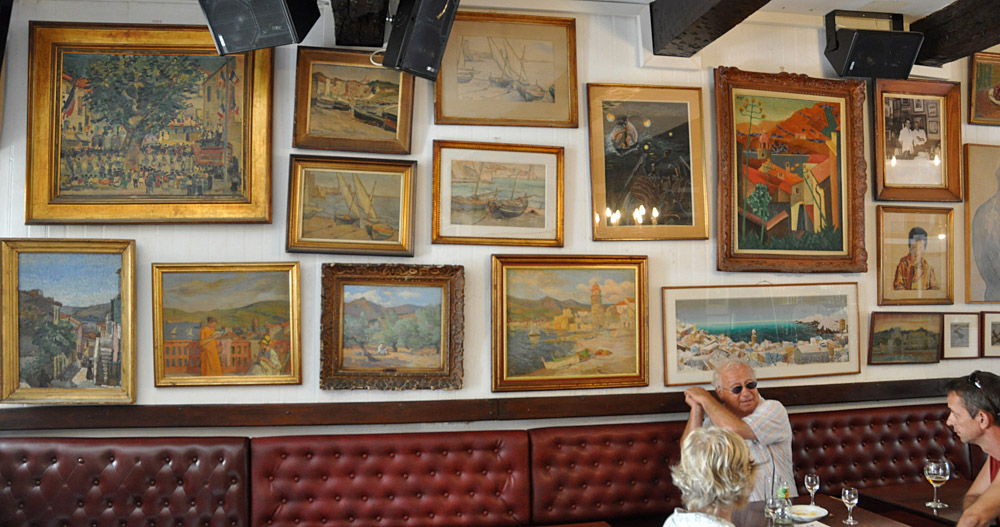
Whatever the truth behind this story there are original paintings and sketches by artists well known and unheard of adorning the walls of the cafe and bar. Until they were stolen there were even original sketches by Picasso hanging on the wall, now only copies are there.
According to the granddaughter of the owner at the time the paintings were gifts from the artists who became firm friends with the owner. Perhaps some were payment, but as she points out the business would not have survived if all the artists paid in paintings. Whatever the truth it is a wonderfully atmospheric place to enjoy a coffee.
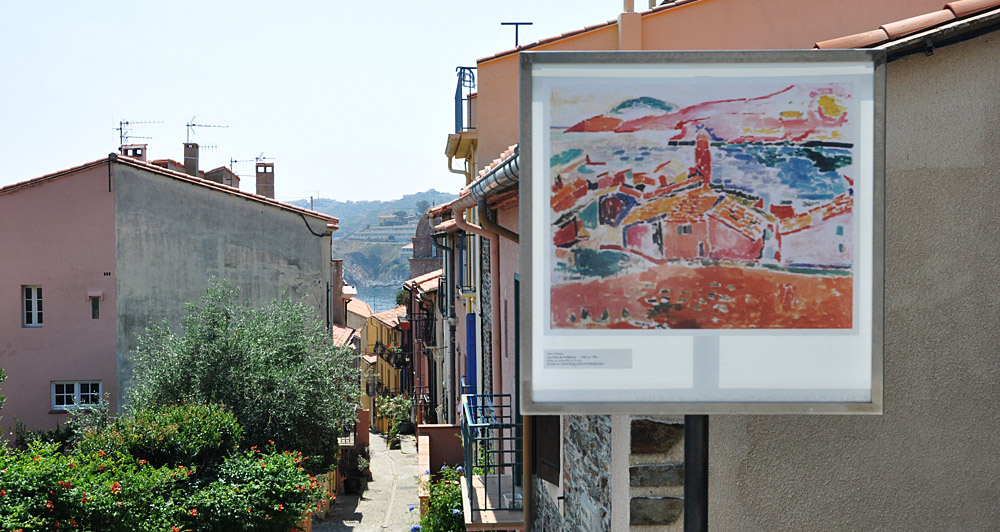
A wander around Collioure’s steep and narrow streets away from the tourist crowds reveals a plethora of artist studios. It seems Collioure still attracts artists.
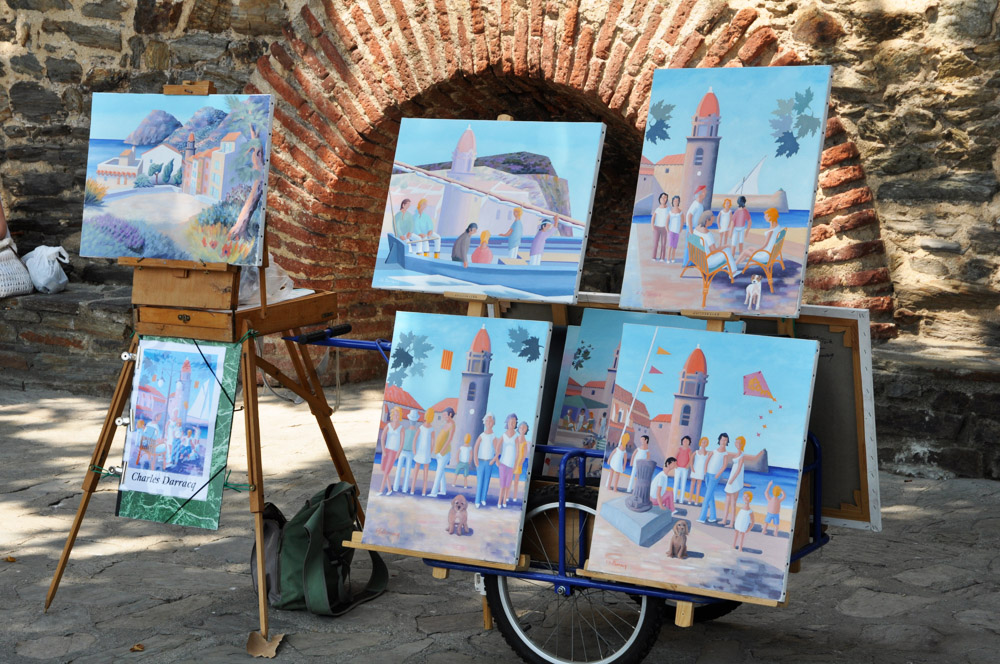
Many of these artists paint the same scenes the Fauve artists chose to put on canvas. The local tourist office has put up helpful signs at the locations where the artists set up their easels. These include a copy of the painting and a frame. The later is more for photographers wishing to convert the scene to several million pixels rather than brush strokes.
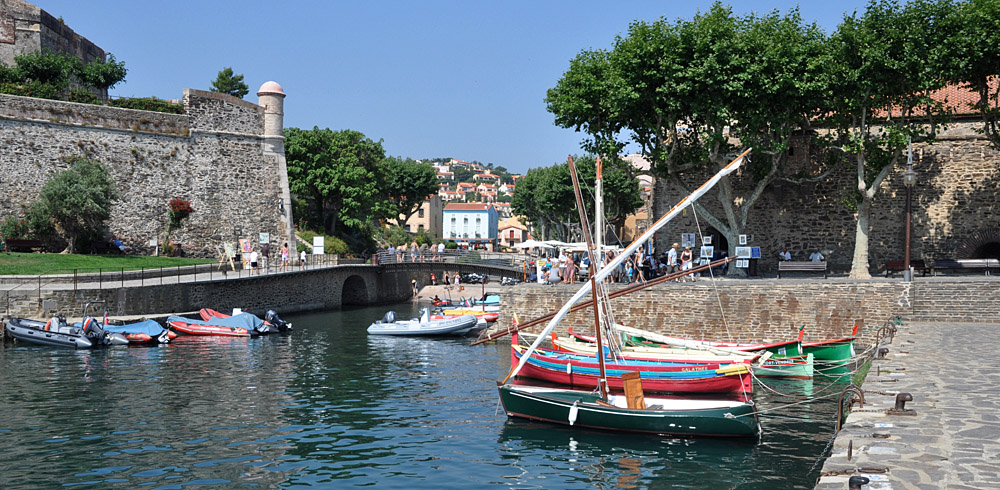
Wandering the harbour front, the streets and the three small bays you can see why the artists loved Collioure. It is so picturesque with colourful lateen boats bobbing in the harbour, a lighthouse converted into a church, a citadel and bougainvillaea bedecked lanes and courtyards.
I may not be a painter but I consider myself an artist with a camera as my tool of choice. I was continually framing and composing, pressing the shutter and taking photographs. Collioure is just so inspiring.
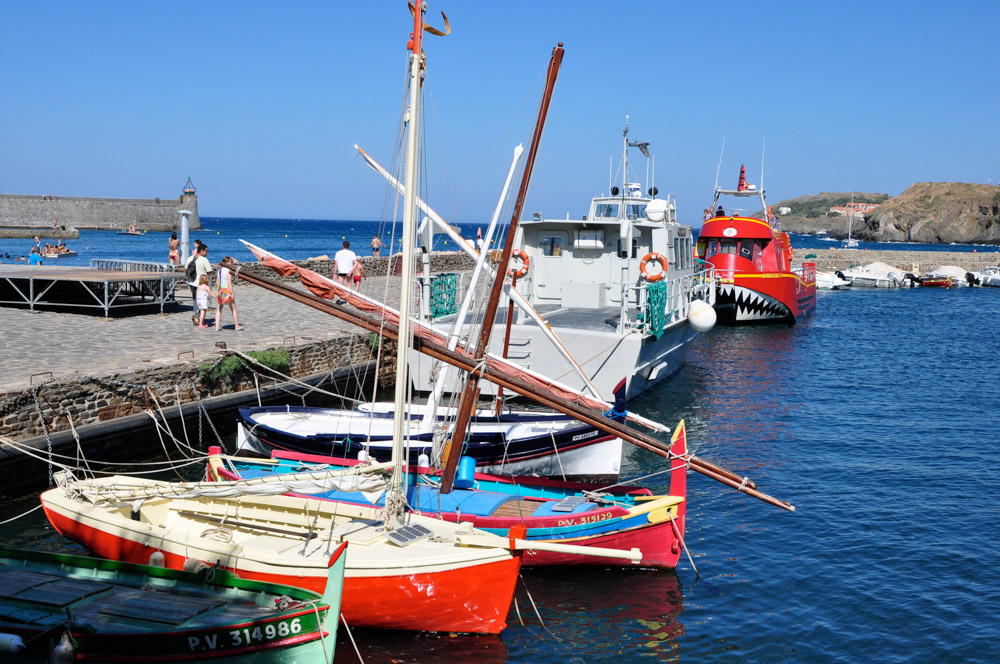
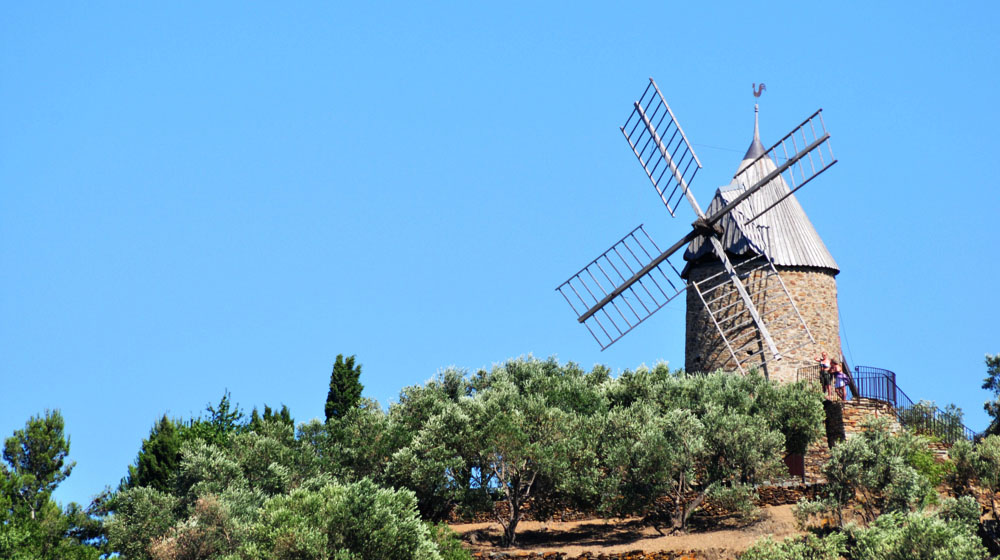
The Lure of Collioure is still alive and well among artists and photographers… and not a few tourists too. Certainly, the Lure of Collioure has called me back on more than one occasion and I will no doubt be returning again.
Do you have a special place in France that you like to return to again and again? Do tell us about it in the comments below.